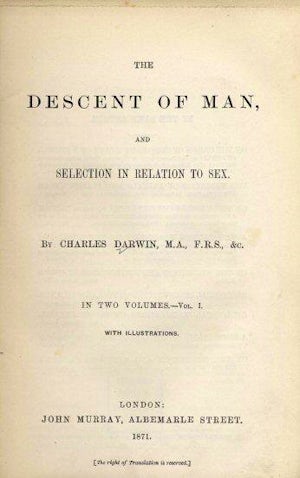February, 1888. Victoria Woodhull, a prominent American suffragist, publishes her booklet "Stirpiculture; or, The Scientific Propagation of the Human Race". Stirpiculture, a term synonymous with eugenics, was likely used due to its association with the controversial Oneida Community, a utopic sect that practiced free love and reputedly only permitted its "superior" members to become parents.
Woodhull was an early advocate of eugenic principles in both the United States and Great Britain - she claimed to start advocating for eugenic practices in the early 1870s, before Francis Galton even coined the term (Inkling books, 2009). She was twice-divorced, had limited education, and came from uncertain pedigree. She was also well known for her views on sexuality and politics, all which may have contributed to her early advocacy of eugenics of "stirpiculture" being overlooked in favour of the well-educated and well-bred Sir Francis Galton's writings (Inkling books, 2009).
Woodhull's son Byron had developmental disabilities, and this combined with Woodhull's identification as a spiritualist contributed to her interest in eugenics (Robinson, 2010). Woodhull believed that Byron's father's alcoholism, combined with her own youth and inexperience contributed to his problems (Robinson, 2010), and that physical, mental, and emotional fitness were bound together (Robinson, 2010). Her first speeches on eugenics began in the 1871 (although she referred to the concept as stirpiculture), and were important for sterilization laws in the United States, and Margaret Sanger's birth control movement (Inkling books, 2009).
"Stirpiculture; or, The Scientific Propagation of the Human Race" was one of Woodhull's later publications, issued as a pamphlet when she moved back to London, England from the United States (Robinson, 2010). Woodhull had some influence in high British society (Robinson, 2010), and this pamphlet was meant to support eugenics (Campbell, 1993), and expand on views Woodhull already made known to the public through her speeches (Journal of Materia Medica, 1890), and specifically towards the "reason and utility" of marriage (Journal of Materia Medica, 1890).
In addition to its focus on marriage, "Stirpiculture" examined Malthusian theory, the spirituality of the human body, and encouraged the use of principle of animal breeding on humans (Campbell, 1993 ; Robinson, 2010). Woodhull also recommended further educational measures (particularly towards motherhood and prenatal development) on the part of the government (Campbell, 1993), whom she felt was the architect of the "building" that was society (Inkling books, 2009). Woodhull suggests however, that most of the people who create the foundation of the building could be made stronger by separating the "unfit" - criminals, drunkards, and the mentally ill (Inkling books, 2009).
Upon the pamphlet's release, critics suggested Woodhull was tackling ideas beyond her understanding, and that because of this, her work would be of little help to scientific study (Journal of Materia Medica, 1890). Many publications Woodhull worked on at the time also supported eugenic messages, including "The Rapid Multiplication of the Unfit" (1891), and her work for the periodical, The Humanitarian, in which Woodhull published several pieces between 1892 and 1901 on eugenics, with the help of her daughter, Maud Zula Woodhall (Robinson, 2010 ; Journal of Materia Medica, 1890). These works supported eugenic measures such as change in marriage laws, sterilization of the "unfit", state custody of the "unfit", and improved education and access to birth control for women (Robinson, 2010). Maud Zula Woodhall also published on similar subjects independent of her mother, and was met with more positive criticism (Journal of Materia Medica, 1890).
The "Stirpiculture" booklet may be read online here.
-Colette Leung and Amy Dyrbye
Campbell, K. K. (1993). Women Public Speakers in the United States, 1800-1925: A Bio-critical Sourcebook. Wesport, CT: Greenwood Publishing Group.
Editors or Encyclopaedia Britannica. (2013, November 12). Victoria Woodhull. Encyclopedia Britannica. Retrieved from: http://www.britannica.com/EBchecked/topic/647589/Victoria-Woodhull
Journal of Materia Medica. (1890). Mrs. Victoria Woodull. Journal of Materia Medica, 27.
Inkling Books. (2009). Lady Eugenist by Victoria Woodhull. Retrieved from: http://www.inklingbooks.com/inklingbooks/moredetails/ladyeugenist/ladyeugenist.html
Robinson, S. C. (2010). Victoria Woodhull-Martin and The Humanitarian (1892-1901): Feminism and Eugenics at the Fin de Siecle. Nineteenth-Century Gender Studies, 6(2). Retrieved from: http://www.ncgsjournal.com/issue62/robinson.htm
 1869:
Galton publishes Hereditary Genius
1869:
Galton publishes Hereditary Genius
 1871:
Charles Darwin publishes The Descent of Man
1871:
Charles Darwin publishes The Descent of Man